The External Solar System - The Kuiper belt - the Oort cloud
Short-period comets come from the Kuiper belt, a region located in the plane of the solar system, beyond the orbit of Neptune. This belt probably starts at thirty astronomical units (the Earth-sun distance) and extends to hundreds of astronomical units.
The Kuiper belt and the Oort cloud:
It is believed that this belt is the source of short-period comets. The first of these objects was discovered in 1992 by a team at the University of Hawaii. It belongs to the group of so-called Transneptunian objects (TNO, Transneptunian Objects). The objects discovered so far have sizes between 100 and 1,000 kilometers in diameter. It receives its name in honor of Gerard Kuiper and Jan Oort.
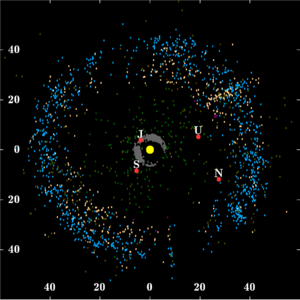
We consider that it contains more than 200 million small frozen bodies susceptible to becoming comets. Some astronomers think that Triton, Pluto and Charon are objects of this belt, which are simply distinguished by their exceptional size and orbit.
They are the gravitational disturbances engendered by the giant planets that from time to time modify the orbit of one of these bodies and set in motion a change of trajectory towards the Sun.
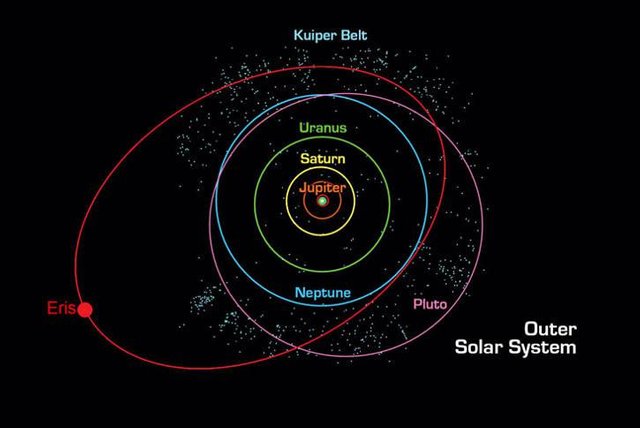
Today we know that the Kuiper Belt is quite populated, there we have found more than a thousand objects, and it is suspected that there may be up to 100,000 of more than 100 kilometers in diameter. However, they will not be there forever. With the passage of time, the clashes between them will cause them to turn into dust. Perhaps in "only" 100 million years there is nothing left of the Kuiper Belt we know today (with the exception of the largest dwarf planets).
Pluto is not the only dwarf planet in that region, there are other possible candidates: Quaoar, Makemake, Haumea, Orcus and Eris. Some of them even have their own moons.
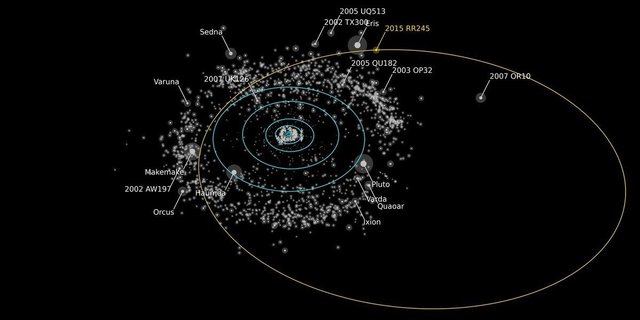
What is the Oort Cloud?
It is a giant sphere, whose diameter is not entirely clear. Everything indicates that the Oort cloud was formed as a remnant of the protoplanetary disk that formed around the Sun 4,600 million years ago. The most accepted hypothesis is that objects from the Oort cloud formed very close to the Sun, in the same process in which planets and asteroids were created, but gravitational interactions with young gas planets such as Jupiter and Saturn drove these objects towards long orbits.
Although, in any case, it seems clear that it is much larger than the Kuiper Belt. Some astronomers calculate that this region begins at approximately 2,000 or 5,000 AU (astronomical unit, which is the distance that separates the Sun from Earth, 149,500,000 kilometers) from our star and ends at approximately 50,000 AU, which is the equivalent to almost a year. Other astronomers believe that their advantage will extend beyond 100,000 AU.
Although some of the comets in our Solar System come from the Kuiper Belt, scientists believe that most come from the Oort Cloud. In fact, this area is made up of the same elements as comets, (most of the objects are composed of ammonia, water and methane), and it is believed that they are formed when a star gets close enough to that region to push them into the Solar System (something we believe happened 70,000 years ago).
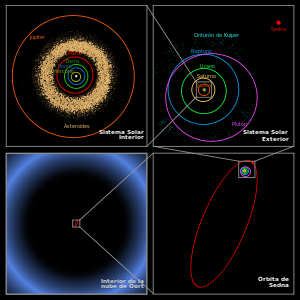
These comets, of long orbital period, initiate an endless passage towards the Sun. Comets of short period, that is to say, that have orbits of up to 200 years of duration, the process of the Belt, while the periods of duration are long, like this is the case of comet C / 1999 F1 of the Catalina catalog, which has an orbital period of 6 million years), come from the Oort cloud region.
By the way, in this norm, as in everything, there are exceptions. It is very possible that Halley's comet, for its short period of 75 years, comes from the Kuiper belt. However, this is not the case, it is believed that it actually comes from the Oort Cloud.
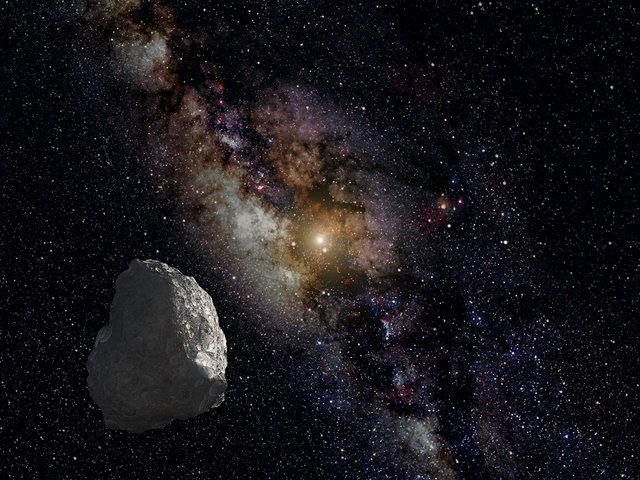
Transneptunian objects:
All objects beyond Neptune fall into the classification of trans-Neptunian objects, that is, objects whose orbit around the Sun), regardless of whether they are in the Kuiper Belt or the Oort Cloud. As the Cloud is much further away, it has only been possible to explore and astronomers have not been able to identify with the same degree of detail as in the Kuiper Belt. In addition, with the exception of long-period comets, astronomers found four celestial bodies.
Leaving aside long-period comets, only four objects are known to crawl to the Oort cloud; it is 90377 Sedna, (148209) 2000 CR105, (308933) 2006 SQ372, 2008 KV42.
https://es.wikipedia.org/wiki/Nube_de_Oort
https://es.wikipedia.org/wiki/Cintur%C3%B3n_de_Kuiper
http://antonioheras.com/sistema_solar_externo/el-cinturon-de-kuiper-y-la-nube-de-oort.htm
https://www.astrobitacora.com/la-nube-de-oort-y-el-cinturon-de-kuiper/
Great Article. I am interested in Astronomics, too. Keep it up :-)
Thank you
Thank you